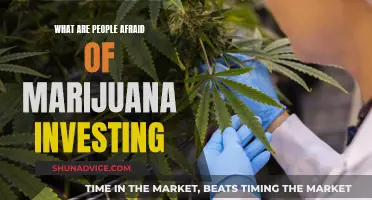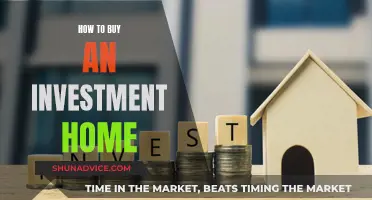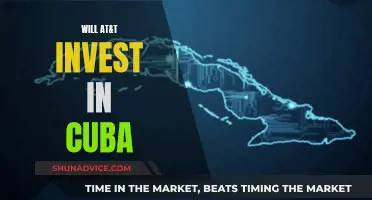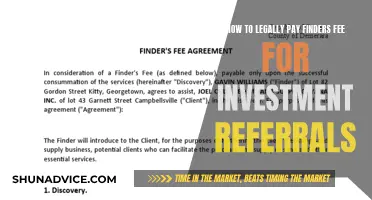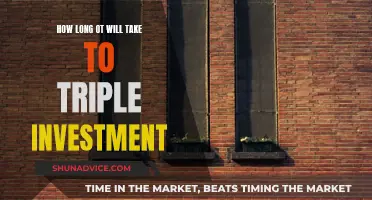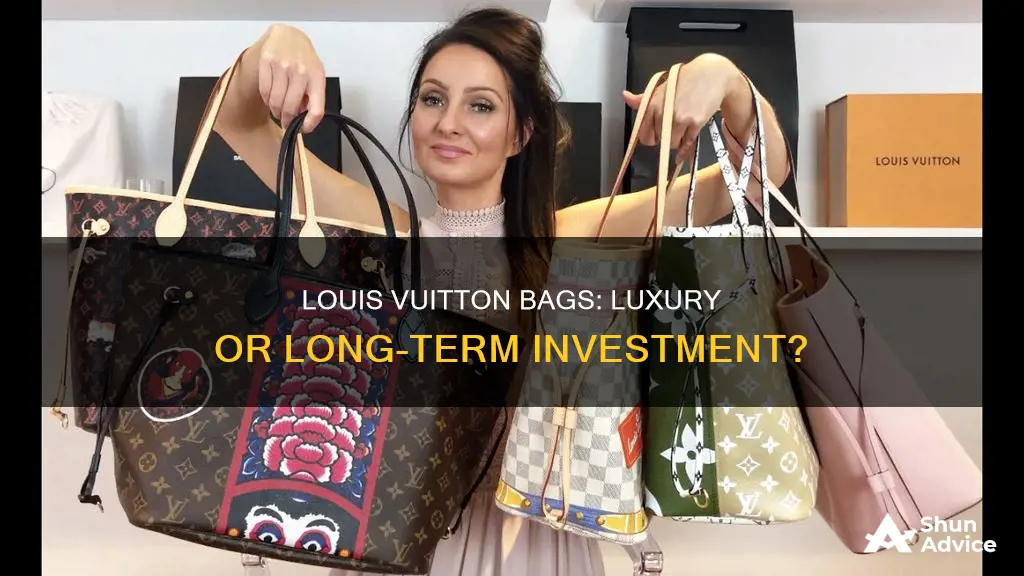
With over 400 stores worldwide, Louis Vuitton is one of the most iconic, recognisable, and popular designer brands in the world today. But is buying a Louis Vuitton bag a good investment?
According to handbag valuation manager at The Real Real consignment retailer, Kiara Cooper, Durability is a given, as investing in a designer bag means investing in a piece that is built to last. But you'll want a design that you love, that is functional and versatile and can easily blend into your lifestyle.
Louis Vuitton bags are certainly durable. The brand tests the bags by filling them with 3.5kg weight and dropping them from half a metre, according to Elle UK.
In terms of resale value, Louis Vuitton bags boast some impressive figures, especially on their short-release styles. For example, the Nigo Keepall Bandoulière bag has a 119% average value retention, while the Louis Vuitton x NBA Ball in Basket Bag has a 147% average value retention. The brand's average retention value at resale is 92%.
However, not all Louis Vuitton bags are good investments. The Louis Vuitton Alma, for instance, only carries an average retention value of 67%.
What You'll Learn

Louis Vuitton's brand value and recognition
Louis Vuitton is one of the most iconic, recognisable, and popular designer brands in the world. Founded in Paris, France, in 1854, it is valued at $39.3 billion, making it "the world's most valuable luxury brand" according to Forbes. With over 400 stores worldwide, it is also "one of the most profitable brands in the world" due to its over 30% profit margins.
The brand's history is fascinating. Louis Vuitton himself began his career with an apprenticeship at Monsieur Maréchal, where he learned to make compact trunk luggage for horse-and-carriage travellers. After 17 years, he left to open his own workshop near Place Vendôme in Paris. By the 1930s, Louis Vuitton had expanded into handbags, and many of the bags created during this decade remain popular today.
The brand's CEO, Bernard Arnault, told CNN in 2014: "We want Louis Vuitton to still be the number one brand in ten years. In our business, the most important word is desire, so we want to continue creating desire."
This desire is reflected in the brand's high demand, with lines outside its stores in cities worldwide. The brand's popularity is also evident in the abundance of fake Louis Vuitton products on the market. According to a 2019 report, 72% of Louis Vuitton bags and accessories sold on a South Africa-based classifieds site were fakes. The brand's long history and consistent style have made it a prime target for counterfeiters, who have had ample time to develop near-perfect replicas.
Despite the risk of counterfeits, consumers continue to desire Louis Vuitton products, recognising their high quality and craftsmanship. The brand's signature canvas, for example, is scratch-resistant, lightweight, and waterproof, while its leather trim develops a weathered look over time.
Louis Vuitton's brand value is further demonstrated by its consistent price increases, typically raising prices by 4-7% annually or even twice a year. This strategy ensures that consumers remain eager to purchase, knowing that prices will likely increase without warning.
In summary, Louis Vuitton's brand value and recognition are exceptional, with a long history, consistent style, and high-quality craftsmanship. The brand's popularity and desirability remain strong, reflected in its high demand, price increases, and the prevalence of counterfeits.
Microsoft: A Smart Investment Choice
You may want to see also

Resale value of Louis Vuitton bags
Louis Vuitton is a symbol of quality, durability, and style, and its brand value always ranks high in the field of luxury goods. The brand's classic Monogram series is made of canvas coating with high abrasion resistance, making it practical and long-lasting.
The resale value of Louis Vuitton bags can be quite high, with some sources claiming that they can retain at least 85% of their resale value. The Speedy 30, for example, is one of the most popular sizes in the Speedy family and is said to be a good choice for those looking to resell. The bag was first introduced in the 1960s and has seen a 25% increase in price over the last four years.
Another popular choice for resale is the Neverfull bag, which comes in various materials, limited editions, and special artist collaborations. It is one of Louis Vuitton's most successful and best-selling bags, and its resale value is often close to the current retail price. The Neverfull has seen a significant price increase since its introduction in 2007, with a 100% price increase from 2007 to 2016.
The Capucines, Petite Malle, Multi Pochette, Pochette Metis, On The Go, and NeoNoe are other popular Louis Vuitton bags with varying median resale prices.
While the value of luxury handbags can fluctuate due to trends, certain styles from iconic brands like Louis Vuitton tend to have high resale values.
XRP Investors: How Many?
You may want to see also

The history of the Louis Vuitton brand
Louis Vuitton, born in 1821, walked 163 miles from his hometown to Paris at the age of 16. There, he began apprenticing for Monsieur Maréchal, a trunk designer, in 1837. After 17 years, Vuitton left to start his own business. In 1854, he launched his namesake label and opened his own workshop in Paris, focusing on box-making before moving into trunk-making.
Vuitton's biggest design contribution was the invention of the flat-topped trunk in 1858. The rectangular canvas chests were stackable, unlike their rounded predecessors. The following year, he opened his atelier in Asnières, just northeast of Paris, with 20 employees. By 1900, his workforce had grown to 100, and by 1914, the company had more than doubled in size.
In 1866, Vuitton innovated again with the release of the "unpickable" tumbler lock. He and his son, Georges, created a single lock system with two spring buckles. The design is still used in Louis Vuitton trunks today.
In the late 1880s, Vuitton launched one of his label's most iconic canvas patterns, the checkered Damier print. He passed away in 1892, and his son, Georges, took over as the company's head. Georges sought to make Louis Vuitton a worldwide name and exhibited the company's products at the Chicago World's Fair in 1893.
The brand debuted its signature monogram canvas, the LV Monogram, in 1896. Georges created the pattern to prevent counterfeiting. In 1913, the Louis Vuitton flagship store opened on the Champs-Élysées, followed by stores in several other cities worldwide.
The Keepall and the Speedy, two of Louis Vuitton's most iconic bags, were introduced in the 1920s and 1930, respectively. The Speedy remains one of the brand's bestsellers.
In 1987, Louis Vuitton merged with Moët Hennessy, creating LVMH, a luxury goods conglomerate. The brand has continued to thrive and expand, collaborating with various artists and designers and solidifying its place as one of the world's leading luxury fashion houses.
Investing: Why the Fear?
You may want to see also

The limited production of Louis Vuitton goods
Louis Vuitton controls its manufacturing and production, which means it can scale back production of a product that isn't selling well. This prevents the creation of excess merchandise.
The company also suspends production on a particular product once it has met its sales target. This is because too many of the same item on the market would only serve to decrease its value.
According to Mark Ellwood, author of "Bargain Fever: How To Shop In A Discounted World", Louis Vuitton also practices vertical integration. This means the company owns its own factories and leases the spaces it uses in department stores. While some companies sell their products at a wholesale price to department stores, which can then be put on sale, Louis Vuitton does not.
While Louis Vuitton takes care to limit all of its production, some products are especially limited. For example, there are only 85 of the 2018 Royal Wedding Petite Malle handbags in existence. This may explain its $16,500 price tag.
The company's short-release styles can have impressive resale values. For example, the Nigo Keepall Bandoulière bag has a 119% average value retention, while the Louis Vuitton x NBA Ball in Basket Bag has a 147% average value retention.
The brand's average retention value at resale is 92%.
Home Sweet Home Equity: Unraveling the Myth of Property as a Financial Asset
You may want to see also

The abundance of Louis Vuitton fakes
Louis Vuitton is one of the most counterfeited brands in the world. The fashion house's battle against fakes is an ongoing one, with its legal team playing "whack-a-mole with fraudsters across the globe".
The abundance of fakes means that it is important to know how to spot a counterfeit Louis Vuitton item. The brand's legal team advises that the ability to tell the difference between an authentic Louis Vuitton bag and a fake "comes with time". However, there are several tell-tale signs that can help you spot a fake.
The Logo
The LV monogram logo, first incorporated over a century ago, is one of the most recognisable features of a Louis Vuitton bag. On an authentic bag, the letter L sits lower than the V, creating a perfect overlay. The LV monogram should be continuous, without breaks or interruptions, and combined with three distinct quatrefoil designs that repeat in the same order as the logo across the outside of the bag. If you notice irregular spacing, interruptions, or a misaligned pattern along a seam, the bag is likely a fake.
The Hardware
The hardware on a Louis Vuitton bag should be made of metal and will never be plastic. It will be durable and evenly coloured, and will not have an overly shiny gold tone. All hardware pieces on an authentic bag, from clasps to rivets, will bear the brand's engravings, which will be crisp and clear. The zipper puller should match the rest of the hardware in colour, have a solid weight, and run smoothly.
The Stitching
The stitching on an authentic Louis Vuitton bag will be perfectly straight and even, with no loose threads, fraying, or uneven stitches. The number of stitches will not change, so all bags of the same style will have the same number of stitches in the same places. For example, authentic Louis Vuitton Alma, Speedy, and Neverfull bags have exactly five stitches across each of the tabs where the handles are secured.
The Handles
The handles and piping of Louis Vuitton bags are constructed from vachetta leather, a natural-toned cowhide that deepens to a rich honey colour with age. The handles will darken as soon as they are exposed to air, so if you are looking at a vintage bag with bright, natural handles, it is likely a fake. The handles are often framed by a contrasting burgundy edge trim that will also darken over time. Check for flaws, a plastic appearance, or a painted texture in the contrast trim.
The Lining
Although Louis Vuitton uses different linings for different collections, Monogram canvas bags are generally lined in brown cotton, and Damier Ebene Canvas bags are historically lined in red microfiber. However, there are a number of exceptions to this, and certain styles are made with one continuous panel of canvas or leather, so the logo will be upside down on one side. Do your research to find out whether a particular lining was used in the year a bag was produced.
Investment Bankers: Why All the Hate?
You may want to see also
Frequently asked questions
Yes, Louis Vuitton is a designer "unicorn", with some bags having a 119% average value retention and others having a 147% average value retention. The brand's average retention value at resale is 92%.
The Louis Vuitton Speedy 25, the LV Neverfull, the Louis Vuitton Capucines Bag, the LV Pochette Metis (PM) and the LV Twist bag.
Yes, Louis Vuitton is the world's most valuable luxury brand, with a valuation of $39.3 billion. It is also one of the most profitable brands in the world due to its over 30% profit margins.
Louis Vuitton operates over 460 stores across 50 countries. In the United States, California is a hotspot for the brand, with New York City being home to three retail locations, including the brand's flagship store. You can also purchase products directly from the Louis Vuitton website.
Bags should be lined in coated canvas, canvas, cross-grain leather, Vuittonite, and Alcantara, not genuine suede or pigskin. Pay attention to the stitching, which should be clean and even, and the pattern, which should be symmetrical from side to side. The bag's stamp should say "Louis Vuitton" and indicate the country of origin.


